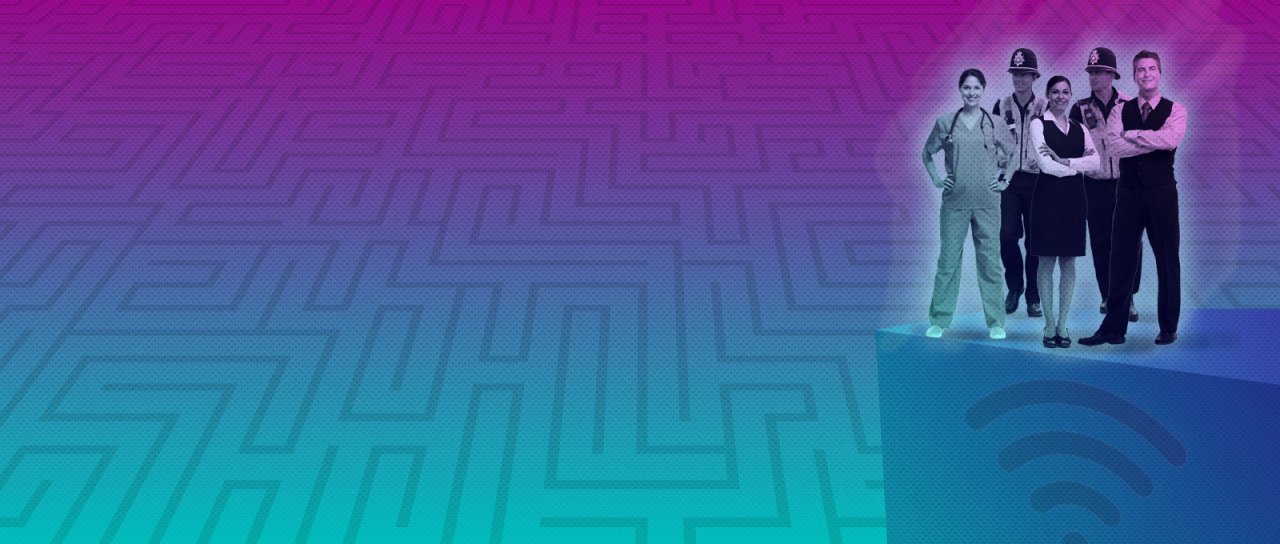The public sector should be living on the edge
The combination of IoT and edge computing will allow important decisions to be informed by real-time information, potentially saving lives.
Internet of Things (IoT) presents vast opportunities across the public sector. From autonomous transportation, health monitoring devices, and traffic and lighting applications, to law enforcement and smart bin sensors, IoT has the potential to improve our everyday lives.
But when it comes to IoT, speed is everything. Emergency and crisis situations in particular require decisions to be made almost instantly. For this reason, public sector organizations are looking to edge computing — where IoT device data can be processed in real-time. The edge eliminates even the tiniest lag and is more cost-effective than sending data to the cloud for processing.
Is your public sector ready for life on the edge? Let’s take a closer look.
A more secure solution
Public sectors know how to protect citizen data and prevent potentially dangerous disruption to services: they keep their data local (i.e., stored on a private server). Edge computing works off that same premise, keeping data local for decision-making in real time.
The edge limits the distance traveled by any data and therefore reduces some of the security risk associated with moving it to the cloud or another data center. And there is a smaller window in which anything can be disrupted or corrupted, as data remains highly localized.
Cutting costs
The bottom line is the most important one for the public sector. Budgets tend to be tighter, and digital transformation projects can be limited by financial concerns.
Edge computing can actually bring cost savings. This is especially true in regard to data ingest charges, where only sending the data that needs to persist into the cloud reduces data movement charges. With data essentially being processed on-site rather than in the cloud, organizations can reduce their cloud capacity requirements and associated costs.
Smarter use of cloud infrastructure also offers cost optimization benefits. Cloud, in tandem with edge, is a great example of how the architecture can work more flexibly and offer improved savings based on actual usage and requirements, while being fully scalable.
Blockers in the road
Although the combination of IoT and edge computing has great promise for the public sector, the technology still faces considerable challenges before it can be adopted on a significantly wider scale.
One of the biggest challenges involved in the rollout of IoT relates to the lack of understanding about how the technology works within the public sector. A possible reason for this could be the widening digital skills gap within the industry, which is highlighted by a recent report published by the Cloud Industry Forum that found that 40% of public sector organizations still do not have the right skills to adapt to ongoing digital transformation.
Without sufficient technical expertise, many councils struggle to comprehend how IoT-enabled solutions operate and the benefits that they could bring, making key decision makers less inclined to consider integrating the technology into their services.
If local authorities are to overcome the digital skill shortage that they face, council leaders must place more emphasis on nurturing IT talent to help them succeed in an increasingly digitalized world. Once a greater level of digital literacy has been achieved within the public sector, it is more likely that councils will understand the advantages of using IoT.
Besides the public sector’s digital skills gap, many councils are hesitant about adopting IoT simply because they do not believe there is enough evidence to support that the solutions truly do work. As more local authorities agree to trial the tech, the amount of evidence in favor of IoT will likely grow, making the task of persuading council leaders to embrace solutions considerably easier.
Opportunities ahead
As all organizations become even more data heavy, using the right combination of technologies is essential. Whether it is bringing expertise in house, co-sourcing, or taking counsel from expert partners, the benefits of harnessing the right combination of edge and cloud to complement the increasing deployment of IoT is becoming essential.
The good news for the public sector is that we are only at the start of the IoT revolution. But with immense opportunities for it to improve the services that we interact with every day, now is the time to think smartly about how to embrace its potential.

Is smart sourcing the answer to the public sector IT skills shortage?
About the Authors

Vice President Private Cloud and Government, EMEA
Tim Lovejoy
As Rackspace Technology™ Vice President for Private Cloud and Government in Europe, Middle East and Africa (EMEA) regions, Tim is focused on accelerating the adoption of multicloud. He is dedicated to helping customers achieve the best value from the cloud using the unbiased and deep engineering expertise of Rackspace Technology. Tim has over 25 years of experience in various leadership roles based on delivering value to customers in the public, financial, energy and utilities sectors. Before joining Rackspace Technology, Tim worked for IBM, where he was responsible for enterprise clients. Elsewhere, Tim has held leadership roles at Deutsche Telekom, Hewlett-Packard (HP) and Electronic Data Systems (EDS). While at EDS he worked to shape the growth of the largest government accounts and was responsible for the post-merger of EDS, EMEA into HP.
Read more about Tim Lovejoy